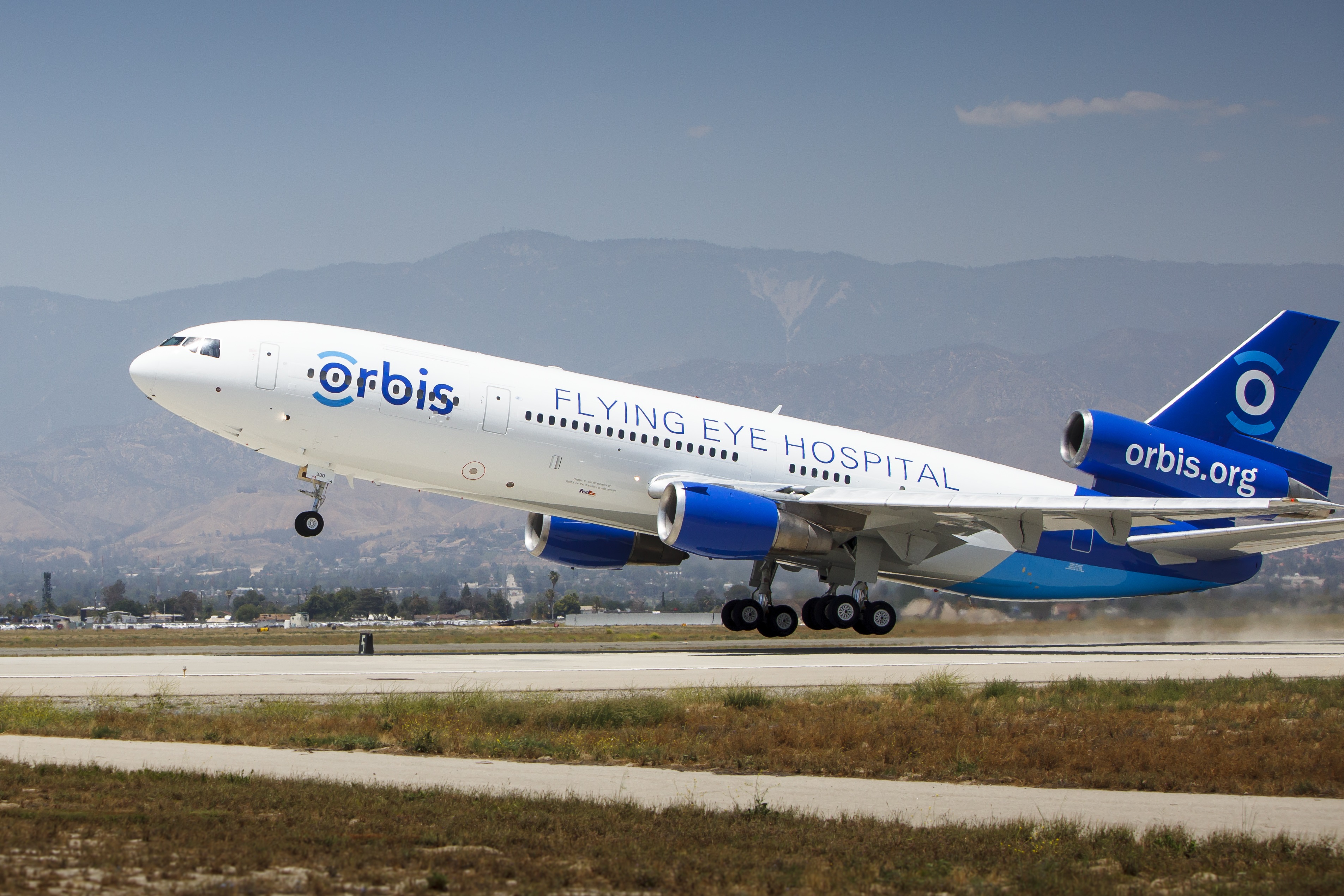 NEWS
NEWS
 NEWS
NEWS
 NEWS
NEWS
A recent collaboration between global technology companies and a non-profit humanitarian organization has led to the creation of a partly automated flying eye hospital which prevents, treats or cures blindness in places around the world where treatments can be inaccessible.
Orbis International and Crestron Electronics, Inc. as well as other technology companies, have teamed-up to create the world’s first hospital with state-of-the-art technology on an aircraft, to treat visually impaired people, and also to facilitate next-generation medical training aboard the plane. SiliconANGLE spoke with the people are Orbis and Crestron to get a better idea of the technology used and how people around the world in will gain from it.
Firstly some background on Orbis. The organization, which was founded in 1982 with a grant from the U.S. Agency for International Development (USAID), has used various planes for its Flying Eye Hospital over the years. The most recent of these planes is by far the most advanced yet.
Since 2009 alone Orbis has conducted more than 150,000 training sessions completed by nurses, biomedical engineers and other health care workers, while 19,000sessions have been completed by doctors. There’s also been 18 million screenings and eye exams that have taken place either on the Flying Eye Hospital or at partner hospitals, performing more than 470,000 eye surgeries – over 140,000 of those surgeries were on children.
It’s estimated that 80 percent of people who face blindness suffer conditions that could be prevented, treated or cured. But 90 percent of all visually impaired people – 258 million people – live in places where it can be difficult to get the right treatment. Orbis not only treats those people that direly need it, but also advocates for the improvement of eye health care systems.
Dr. Jonathan Lord, Orbis Global Medical Director, explained to SiliconANGLE that the MD-10 aircraft has an onboard ophthalmic training center, which hosts a 46-seat classroom, a full surgical suite, an operating theater, a laser treatment room, a communications center, a recovery room and audiovisual/IT room.
“The plane is also a totally self-contained unit,” explained Dr. Lord, “All we need is a fork lift and fuel. We filter our own water and make our own hospital grade oxygen. Much of the modular design of the plane has never been done before as we build a U.S. standard hospital on board a cargo plane.”
Typically when visiting a destination, on the first day patients are selected for surgery. The doctors treating those patients are the ones that will be trained so they can replicate the skills on other patients once Orbis has left the country. In-depth training lasts somewhere between 4-6 weeks. Dr. Lord explained how advanced technology has helped to improve surgical procedures and the teaching process.
“During the surgical days on the plane all surgeries and teachings are filmed and broadcast to the classroom,” said Dr. Lord. The 3D filming capabilities – donated by TrueVision – from the Operating Room Microscope are a game changer for teaching and observation in the classroom.
Similarly the broadcast capabilities on the plane mean that Orbis can reach more professionals, in the plane’s classroom and all over the world. Training is given for all the cadres of staff required to build an eye health care system – ophthalmologists, anesthetists, nursing staff and biomedical engineers. The surgeries are filmed in 3D and broadcast to the classroom, participants wearing 3D glasses can therefore experience the same 3D view as the surgeon’s microscope.
“This is immensely helpful and a huge leap forward as they can see depth perception, a key skill/nuance of eye surgery,” said Dr. Lord, adding that while this is practice in some high-tech hospitals it is not regularly available for such a large viewing audience and is unprecedented in the developing nations Orbis works in.
Crestron technology donated the A/V and automation solutions, equipping each room on the plane with screens that can that can be individually operated, choosing which live streams, video or presentation assets they want to display at any time – enhancing the teaching that is happening in a viewer’s area. Crestron also supplied the technology within the IT and AV rooms which integrates and controls all the projections and feeds throughout the plane.
Brian Studwell, Crestron’s Director of Consultant Programs told SiliconANGLE that Crestron’s initial involvement with Orbis came after the founder of the company, an avid flyer himself, saw an Orbis plane in 2013 while Orbis was raising money for a new aircraft. He realized then that Crestron and Orbis could be a “perfect fit’. Crestron’s automation and control solutions are usually found in homes and buildings, but the technology also works seamlessly for the interior of an aircraft.
LOS ANGELES, CA – JUNE 02: CEO Bob Ranck unveils Orbis’s Next Generation Flying Eye Hospital and new technology to fight blindness around the world at LAX Airport on June 3, 2016 in Los Angeles, California. (Photo by Araya Diaz/WireImage)
Orbis’ North American launch tour starts in Memphis, June 15-19, New York: 22-26 June, Washington DC: June 29-30 and Dallas Fort-Worth, July 6-10.
The first actual medical program will be in China, followed by Indonesia, followed by more launches in Singapore and Hong Kong. A full program schedule will ensue in 2017.
Support our mission to keep content open and free by engaging with theCUBE community. Join theCUBE’s Alumni Trust Network, where technology leaders connect, share intelligence and create opportunities.
Founded by tech visionaries John Furrier and Dave Vellante, SiliconANGLE Media has built a dynamic ecosystem of industry-leading digital media brands that reach 15+ million elite tech professionals. Our new proprietary theCUBE AI Video Cloud is breaking ground in audience interaction, leveraging theCUBEai.com neural network to help technology companies make data-driven decisions and stay at the forefront of industry conversations.